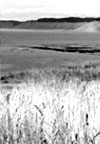| |
|
 |
 |
 |
|||
 |
|||||
 M
MGeneral Setting and Resources M Research Support Facilities M Relevant Fields of Study M Recent Case Studies M Contact Info |
 |
Park Purposes: M Olympic National Park was established in 1938 to “preserve for the benefit, use and enjoyment of the people, the finest sample of primeval forests of Sitka spruce, western hemlock, Douglas fir, and western red cedar in the entire United States; to provide suitable winter range and permanent protection for the herds of native Roosevelt elk and other wildlife indigenous to the area; to conserve and render available to the people, for recreational use, this outstanding mountainous country, containing numerous glaciers and perpetual snow fields, and a portion of the surrounding verdant forests together with a narrow strip along the beautiful Washington coast.” Primary park objectives are to: (1) protect the park’s natural and cultural resources and ensure professional management of these resources, (2) provide public access in a manner compatible with preserving park resources, (3) enhance visitor and community understanding and conservation of park resources, (4) work closely with other agencies and the community to effectively solve resource management problems, (5) establish a sound, scholarly basis for resource management decisions, (6) create and maintain a highly professional organization and workforce. (top of page) |
|||
|
|
|||||
|
Olympic National Park encompasses 922,651 acres (over 1,400 square miles) in the center of Washington’s Olympic Peninsula and along a 60 mile strip of wilderness coastline on the Pacific Ocean. The park is located less than 116 kilometers (72 miles) west/northwest of the Seattle-Tacoma area (36 miles as the crow flies). The park receives over 5 million visits per year, most from the state of Washington. Over 96% of the park is designated as wilderness. From sea level, the park rises to almost 8000 feet at Mount Olympus in less than 40 miles. The Olympic Mountains intercept moisture-laden Pacific winds, resulting in a rainshadow effect more pronounced than any other in North America. Olympic National Park is the wettest spot in the conterminous United States. The west slopes of Mount Olympus receive about 200 inches of precipitation per year, while less than 34 miles to the east, precipitation is under 20 inches per year. The park’s biotic diversity mirrors its climatic diversity. Park ecosystems range from the rich intertidal zone, to rainforests, montane forests, alpine meadows, and glaciers. Temperate rainforests blanket the western slopes of the mountains, while alpine tundra conditions prevail in the dry, northeast section of the park. Along this gradient, Sitka spruce, Western red cedar, and Western hemlock yield to subalpine fir, white pine, and lodgepole pine. Although they occur as a separate, higher and more rugged mountain massif, geologically, the Olympic Mountains are closely related to the Coast Range of Oregon. The predominant rock types of the Olympics are sandstone, shale, and basalt. Most rocks of the Olympic Mountains were formed on the bed of the Pacific Ocean, and later uplifted to form a “disorganized, circular array of jagged peaks” . These mountains formed during a separate uplift event, rather than as part of the long coastal mountain chain. Eleven major rivers radiate from the mountainous core of the park. Within these watersheds lie over 260 glaciers and over 400 lakes and wetlands. During glacial periods of the Pleistocene, the Olympic Mountains were cut off from the continent. This island-like isolation fostered high levels of endemism among plant and animal communities of the Peninsula. There are thirty five (35) endemic forms of plants and animals currently recognized on the Olympic Peninsula, including 15 endemic plants, 1 amphibian, 3 fish, and 5 mammals. Largely due to habitat alterations (or harvest activities) outside park boundaries, there are also 10 federally listed threatened or endangered species within the park, including 5 birds, 4 fish, and 1 insect species. At least one species, the gray wolf, is known to be extirpated. Another species, the fisher, is also suspected to be extinct within the park. The park is recognized as both a World Heritage Site, and an International Biosphere Reserve. In its review of the park's nomination as a world heritage site, the International Union for the Conservation of Nature concluded that: "Olympic National Park is the best natural area in the entire Pacific Northwest, with a spectacular coastline, scenic lakes, majestic mountains and glaciers, and magnificent temperate rain forests; these are outstanding examples of on-going evolution and superlative natural phenomena. It is unmatched in the world." (top of page) |
|||||
|
|
|||||
|
For a nominal fee, during the fall, winter, and early spring months, bunkhouse or apartment space is available in park facilities at Port Angeles, Elwha, Kalaloch, or Mora. Park staff operate a wet lab at Lake Crescent; subject to other work underway at the time, this facility may be available to cooperating researchers. Entrance, backcountry camping, and parking fee waivers are also available for approved research. Year round, researchers may reserve dormitory, apartment, and lab space in Forks on the campus at the University of Washington Olympic Natural Resources Center (see http://www.onrc.washington.edu). (top of page) |
|
||||
| Air Resources Biology Fire Ecology Geology Historical Studies Paleoecology (top of page) |
|
Plant Ecology Restoration Ecology Social Science Wilderness Management Wildlife Ecology |
|||
|
|
|||||
Genetics, Demography, and Movement of Olympic Marmots Olympic National Park Suzanne Cox Griffin, L. Scott Mills, Ph.D., Mark Taper, Ph.D.; University of Montana Clark University; Worcester, MA (top of page) |
|||||
|
| |||||
Olympic National Park 600 East Park Avenue Port Angeles, Washington 98362-6798 360-565-3000 www.nps.gov/olym Inquiries and research permit applications should be directed to: Dr. Jerry Freilich Olympic National Park 600 East Park Avenue Port Angeles, WA 98362 (360) 565-3082 jerry_freilich@nps.gov (top of page) |
|||||
|
|
|
|
|
|
| Research & Park Stewardship > The Parks > Olympic N.P. | |